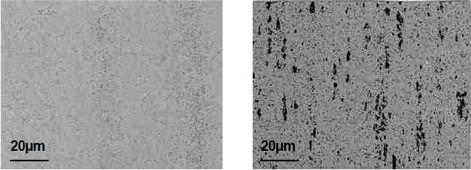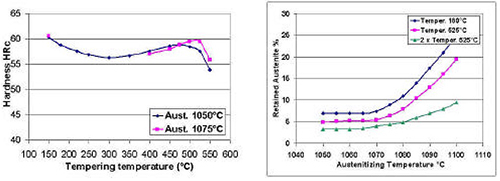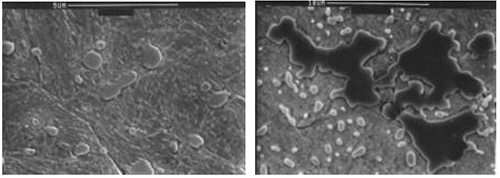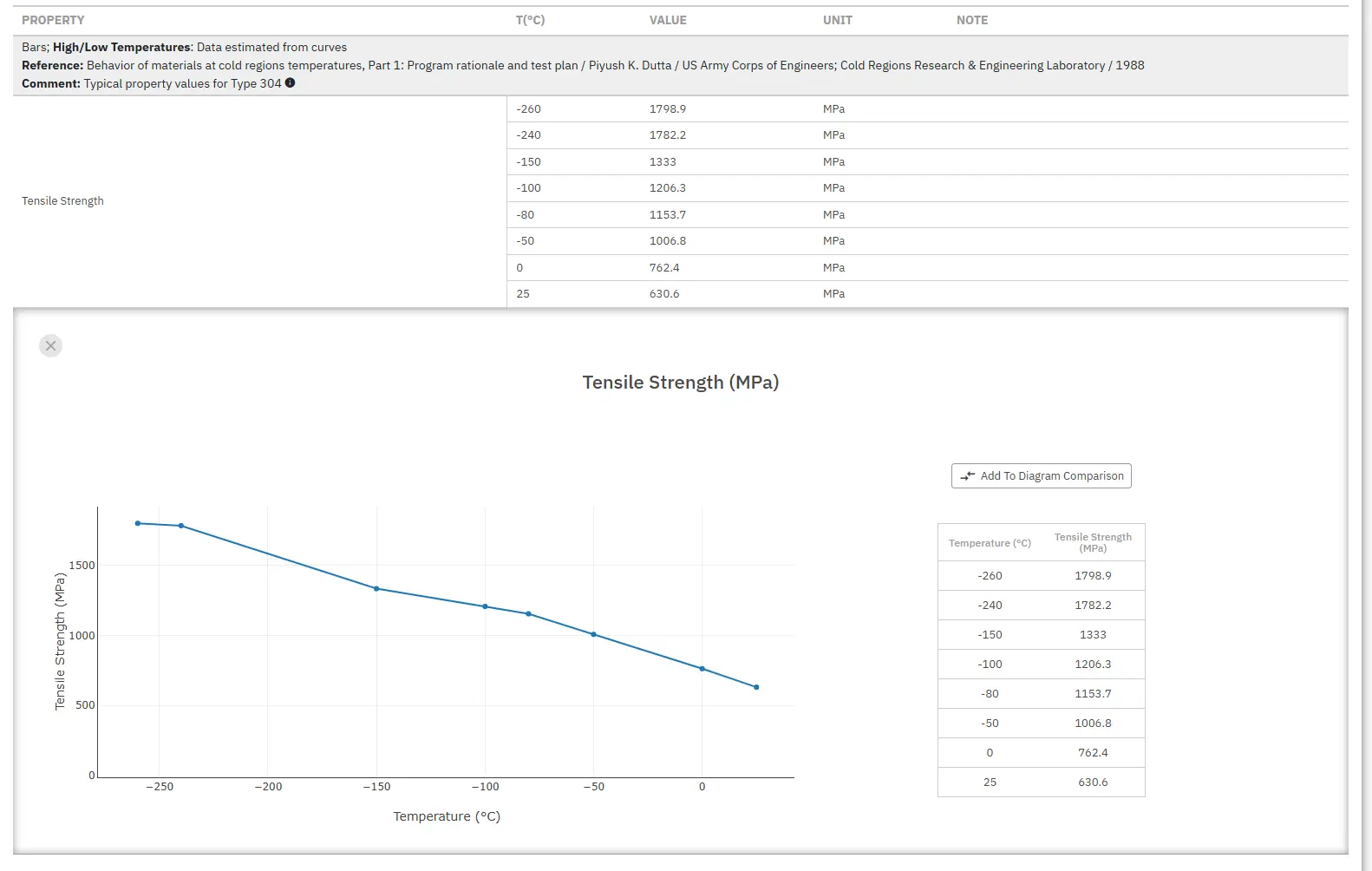Martensitic High Nitrogen Stainless Steels for Aerospace Cryogenic Bearing Applications
Abstract
Martensitic high nitrogen stainless steels demonstrate exceptional properties including high strength, superior ductility, excellent corrosion resistance, and reduced grain boundary sensitization, making them ideal for critical aerospace applications. This research investigates the development and characterization of nitrogen-bearing martensitic stainless steels as alternatives to conventional AISI 420 and X105CrMo17 (AISI 440C) steels for cryogenic bearing applications. The study focuses on production methods using atmospheric pressure nitrogen injection and Fe-Cr-N master alloys, comparing mechanical properties and corrosion resistance. Results demonstrate that XD15NW™ nitrogen martensitic stainless steel offers improved corrosion resistance, enhanced metallurgical properties, superior tribological behavior, and extended fatigue life, making it particularly suitable for aerospace cryogenic applications where crack initiation cannot be tolerated.
Introduction to Martensitic High Nitrogen Stainless Steels
Martensitic high nitrogen stainless steels represent a significant advancement in materials science, particularly for aerospace applications requiring exceptional reliability under extreme conditions. These specialized steels combine the inherent strength of martensitic microstructures with the beneficial effects of nitrogen addition, resulting in materials that exhibit superior mechanical properties and corrosion resistance compared to conventional stainless steel grades.
The development of these advanced materials addresses critical challenges in aerospace engineering, where components must operate reliably in cryogenic environments while maintaining structural integrity throughout their service life. Traditional bearing materials often fall short of meeting the stringent requirements for aerospace applications, particularly in terms of crack initiation resistance and long-term reliability.
Research Objectives and Methodology
Primary Research Goals
The comprehensive research conducted by M. B. Horovitz, F. Beneduce Neto, A. Garbogini, and A. P. Tschiptschin established two primary objectives for advancing martensitic high nitrogen stainless steel technology:
The first objective focused on investigating the feasibility of producing high nitrogen martensitic stainless steel equivalent to AISI 420 grade under atmospheric pressure conditions. This investigation employed two distinct production methods: gas nitrogen injection directly into the melt and the addition of Fe-Cr-N master alloy during the melting process.
The second objective involved conducting comprehensive comparative analysis of mechanical properties and corrosion resistance between the newly developed nitrogen-bearing materials and commercial AISI 420 steel, establishing performance benchmarks for practical applications.
Experimental Approach
Three experimental nitrogen-bearing martensitic stainless steels were produced using air induction furnace technology, with nitrogen content ranging from 1600 to 1900 ppm. The nitrogen addition was accomplished through two methodologies: Fe-Cr-N master alloy incorporation and direct gas nitrogen injection into the melt.
The experimental alloys were formulated with a combined carbon plus nitrogen (C+N) content of 0.32 wt%, enabling direct comparison with commercial AISI 420 steel. The complete processing sequence included homogenization, forging, and quenching procedures, with specific cooling methods selected for each alloy composition.
Table 1. Chemical Composition of Studied Steels (wt%)
| Steels | %C | %N | %Mn | %Si | %P | %S | %Cr | %Ni |
| I | 0.13 | 0.19 | 0.017 | 0.13 | - | 0.010 | 15.80 | 0.11 |
| II | 0.16 | 0.16 | 0.017 | 0.08 | - | 0.010 | 14.70 | 0.11 |
| III | 0.11 | 0.17 | 0.390 | 0.40 | 0.025 | 0.004 | 13.00 | - |
| AISI 420 | 0.33 | 0.02 | 0.35 | 0.24 | 0.026 | 0.018 | 12.60 | 0.23 |
Heat Treatment Optimization and Microstructural Development
Austenitizing and Tempering Procedures
The heat treatment optimization process involved systematic evaluation of austenitizing temperatures ranging from 1073 to 1423 K, with 1273 K selected as the optimal austenitizing temperature. Specimens underwent tempering treatments in the temperature range of 373 to 973 K for one hour, allowing for comprehensive property development assessment.
Quenching procedures were tailored to individual alloy compositions, with alloys I and II air-quenched and alloys III and AISI 420 oil-quenched to achieve optimal microstructural characteristics. This differentiated approach ensured that each alloy achieved its maximum potential for mechanical property development.
Microstructural Analysis Results
Scanning electron microscopy (SEM) examination of nitrogen-bearing steels tempered at 773 K revealed remarkable microstructural refinement, with no visible precipitates observed in the martensitic matrix. This contrasted significantly with the commercial AISI 420 alloy, which exhibited high-density chromium carbide precipitates when subjected to identical heat treatment conditions.
Transmission electron microscopy (TEM) observations of alloy III confirmed the absence of clearly defined fine precipitates, supporting the SEM findings and indicating superior microstructural homogeneity in nitrogen-bearing compositions. The enhanced corrosion resistance observed in 773 K tempered nitrogen steels resulted from the superior precipitate characteristics, including reduced size, optimized stoichiometry, and improved distribution compared to the as-quenched AISI 420 reference material.
XD15NW™ Steel Development and Characterization
Composition and Manufacturing Process
The development of XD15NW™ nitrogen martensitic stainless steel by D. Girodin and colleagues represents a significant advancement in cryogenic bearing material technology. This steel, manufactured through classical melting processes, demonstrates exceptional potential for replacing X105CrMo17 steel (AISI 440C) in demanding cryogenic bearing applications.
The optimized elemental composition for XD15NW™ steel (designated as type X45CrMoV15-2) was determined through extensive laboratory heat optimization studies, resulting in the composition detailed in Table 2 below.
Table 2. Elemental Composition of XD15NW™ Steel
| %C | %N | %Cr | %Mo | %V |
| 0.37–0.45 | 0.16–0.25 | 15–16.50 | 1.50–1.90 | 0.20–0.40 |
The manufacturing process utilizes electric furnace processing followed by electroslag consumable electrode re-melting (E.S.R), ensuring superior material homogeneity and cleanliness. Nitrogen incorporation is achieved through gaseous stirring in the ladle and nitrided ferroalloy additions, with slag composition carefully controlled during re-melting to maintain nitrogen content stability.
Microstructural Refinement Benefits
The reduced carbon percentage in XD15NW™ steel produces remarkably fine and uniformly distributed carbides, significantly improving material properties. Comparative analysis of carbide banding between XD15NW and X105CrMo17 steels demonstrates substantial improvement in microstructural homogeneity.

Figure 1: Carbide banding structures of XD15NW and X105CrMo17
The carbide bands are notably reduced in the nitrogen steel, with remaining eutectic carbides limited to a few micrometers in mean size, compared to several tens of micrometers observed in 440C steel. This microstructural refinement directly contributes to improved mechanical properties and enhanced service life.
Mechanical Properties and Heat Treatment Optimization
Target Property Achievement
The mechanical properties optimization process focused on simultaneously achieving two critical performance targets: hardness of 58 HRC and retained austenite content of 10% or less. These specifications ensure optimal bearing performance while maintaining adequate toughness for cryogenic applications.
Multiple heat treatment sequences were evaluated to establish optimal quench-hardening procedures. The comprehensive study examined the influence of austenitizing and tempering temperatures on hardness and retained austenite content for XD15NW steel with 0.65% C+N content.

Figure 2: Heat Treatment Effects on Hardness and Retained Austenite
Optimized Heat Treatment Procedures
Two distinct heat treatment procedures were identified that successfully meet the required property specifications:
The low temperature tempering treatment involves austenitizing at 1050°C, deep-freezing to -80°C, and tempering at 180°C. This procedure achieves 58 HRC hardness over a 50 mm depth after oil quenching, with deep-freezing effectively reducing retained austenite content and increasing hardness to 60 HRC after tempering between 150 and 200°C.
The high temperature tempering treatment utilizes austenitizing at 1075°C, deep-freezing to -80°C, and double tempering at 500°C. This approach provides alternative property development pathways while maintaining the required hardness and retained austenite specifications.
Microstructural Characterization
Comprehensive microstructural analysis using scanning electron microscopy (SEM), transmission electron microscopy (TEM), and energy dispersive X-ray (EDX) analysis revealed the structural characteristics resulting from optimized heat treatments.

Figure 3: SEM Carbide Analysis in XD15NW™ and X105CrMo17 (440C)
The microstructure achieved after low temperature tempering reveals a fine martensitic structure containing approximately 5% intergranular and intragranular precipitates, identified as M23C6 type carbides containing 4-5% molybdenum without nitrogen incorporation. High temperature tempering produces similar microstructure with additional nitride nanoprecipitates (VC-VN-CrN) measuring only a few nanometers in size.
Corrosion Resistance Evaluation
Comprehensive Testing Protocol
Corrosion resistance evaluation employed three distinct testing methodologies to provide comprehensive assessment of material performance under various environmental conditions. The testing protocol included salt spray testing according to NFX 41.002 standard, 98% relative humidity exposure at 40°C for 2200 hours, and current density-potential measurements in 1% H2SO4 acid-aqueous solution.
Table 3. Atmospheric Corrosion Test Results
| Test | XD15N Tempered at 180°C | XD15N Tempered at 525°C | X105CrMo17(440C) Tempered at 180°C | X105CrMo17(440C) Tempered at 480°C |
| Salt spray 24h | 10 | 6 | 7 | 2 |
| Salt spray 96h | 7 | 3 | 4 | 1 |
| Salt spray 264h | 7 | 3 | 2 | 0 |
| Relative humidity after 2200h | 9 | 8 | 9 | 8 |
The atmospheric test results, representative of pitting corrosion resistance, are expressed using a standardized scale from 10 (no corrosion) to 0 (100% surface corrosion), providing quantitative assessment of material performance under realistic service conditions.
Corrosion Performance Analysis
The current density-potential testing, representative of uniform corrosion behavior, focuses on the critical current density of the comeback peak that characterizes material depassivation. Results demonstrate superior corrosion resistance for nitrogen-bearing steels compared to conventional alternatives.

Figure 4: Current Density Test Results
Low temperature tempering consistently demonstrates superior corrosion resistance compared to high temperature tempering, attributed to carbo-nitride precipitation occurring above 400°C during high temperature treatment. Under equivalent tempering conditions, XD15NW consistently outperforms X105CrMo17 reference material in corrosion resistance.
Performance Advantages and Applications
Structural and Fatigue Improvements
The partial replacement of carbon with nitrogen in medium and high carbon steel compositions results in more homogeneous microstructures with finer eutectic carbides. The addition of strengthening elements such as molybdenum and vanadium provides enhanced hardening effects, contributing to superior mechanical properties.
The fine microstructure, free from large carbides, significantly improves structural fatigue characteristics under pulsating axial tension loading and enhances contact fatigue resistance under both monotonic and pulsating conditions. These improvements directly translate to extended bearing service life and enhanced reliability in critical applications.
Cryogenic Application Benefits
Martensitic nitrogen steel XD15NW™ demonstrates exceptional suitability for cryogenic bearing applications, offering improved corrosion resistance, superior rolling contact fatigue life, and enhanced cryogenic properties compared to conventional bearing materials. The combination of achievable hardness after heat treatment and refined microstructure contributes to outstanding performance under extreme operating conditions.
The enhanced fatigue life under combined rolling and sliding conditions in cryogenic environments makes this material particularly valuable for aerospace applications where operational reliability is paramount. The superior tribological behavior ensures consistent performance throughout extended service intervals.
Aerospace Application Implications
Critical Performance Requirements
Aerospace cryogenic bearing applications demand materials that meet stringent reliability requirements where crack initiation cannot be tolerated under any circumstances. The exceptional properties demonstrated by XD15NW™ nitrogen martensitic stainless steel make it ideally suited for these demanding applications.
The combination of superior corrosion resistance, enhanced mechanical properties, improved tribological behavior, and extended fatigue life positions this material as the optimal choice for aerospace cryogenic bearing manufacturing. The reliability improvements achieved through nitrogen addition address critical safety requirements inherent in aerospace applications.
Manufacturing and Quality Advantages
The classical steelmaking process used for XD15NW™ production ensures consistent quality and reproducible properties, essential for aerospace applications requiring certified material performance. The uniform nitrogen distribution achieved through optimized manufacturing procedures guarantees consistent properties throughout bearing components.
The fine microstructure and reduced carbide size contribute to predictable material behavior and enhanced fatigue resistance, critical factors for aerospace applications where component failure is unacceptable. These characteristics ensure reliable performance throughout the intended service life of aerospace bearings.
Conclusion
The development of martensitic high nitrogen stainless steels represents a significant advancement in bearing material technology for aerospace applications. Research results demonstrate that these materials offer superior properties compared to conventional stainless steel grades, including enhanced corrosion resistance, improved mechanical properties, and extended fatigue life.
The XD15NW™ nitrogen martensitic stainless steel, manufactured using proven steelmaking processes, provides an optimal solution for cryogenic bearing applications where reliability is paramount. The combination of fine microstructure, superior corrosion resistance, and enhanced fatigue properties makes this material ideally suited for aerospace applications requiring zero tolerance for crack initiation.
The comprehensive research validates the use of martensitic high nitrogen stainless steels for manufacturing cryogenic bearings in aerospace applications, where exceptional reliability and long-term performance are essential requirements. This material advancement supports the continued development of aerospace technology requiring superior bearing performance under extreme operating conditions.
立即获取不锈钢的精确性能!
Total Materia Horizon 包含 120,000+ 种不锈钢的性能数据:化学成分、机械和物理性能、非线性性能等。

申请 Total Materia Horizon免费试用帐户,加入来自全球 120 多个国家超过 500,000 名用户的大家庭。